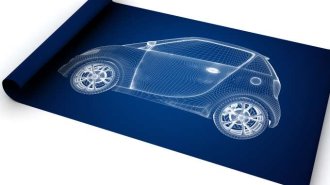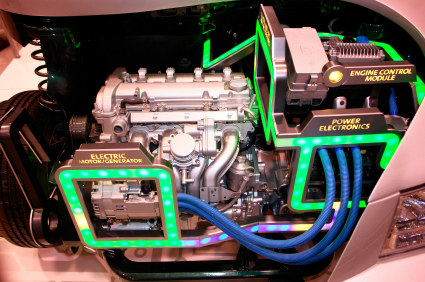

Unlike hybrid cars, which also have a gas engine, electric cars are only powered by an electric car motor. True electric cars are likely to be the transport solution of the future according to manufacturers, although that day is still a long way off at present.
The technology is still growing but electric cars do offer some major advantages. Not only will they reduce and eventually eliminate the need for fossil fuels but they're also completely silent, which will get rid of the noise pollution associated with the gasoline engine. Additionally, there will be no exhaust fumes to worry about as there's no exhaust needed with an electric car motor. How, though, do electric car motors work?
The battery is the heart of an electric car motor. It's also the heaviest item in the vehicle weighing in at well over 1000 pounds. The problem is that it's currently impossible to get a big enough charge into the battery pack to run the car all day. The range is generally in the region of 50 miles before the battery needs recharging. Because it lacks any form of alternator, the electric car motor can't recharge itself as it drives, other than with regenerative braking.
It takes a number of hours to fully recharge the battery. Since very few cities have public charging stations, the only place to recharge the car battery is a home. On top of that, the battery life only runs for between three to four years after which, it needs to be replaced. Because of the current size of batteries, this makes them incredibly expensive. However, the other repair bills will tend to be small because, unlike a gasoline engine, there are few other moving parts.
If the battery is the heart of the electric car motor, the controller is the brain as it tells the engine what to do. It operates as the connection between the battery and the motor, dictating how much of motor's energy is transmitted to the wheels.
When the driver presses down on the gas pedal, the controller sends the power to the engine to increase the speed. As soon as the driver removes his foot from the gas, no further power goes through. The controller on an electric car can be either alternating current (AC) or direct current (DC).
With an AC controller, the DC voltage from the battery is pulsed on and off using three pseudo-sine waves. The polarity of the DC voltage is reversed 60 times each second by six different sets of transistors. The motor of an AC controlled vehicle will run at 240 volts.
On a DC controller, pulses are sent to the motor 15,000 times every second rather than continually being on. It can run on anything from 96 to 192 volts.
The potentiometer is, to all intents and purposes, the safety element on the controller. For that reason, there are two of them attached to the controller and they are connected to the gas pedal. Every time the driver presses down on the gas, the two potentiometers make comparisons with each other about the increase in power. If they match, more voltage will pass through the controller to the motor. If they don't, the controller will do nothing.